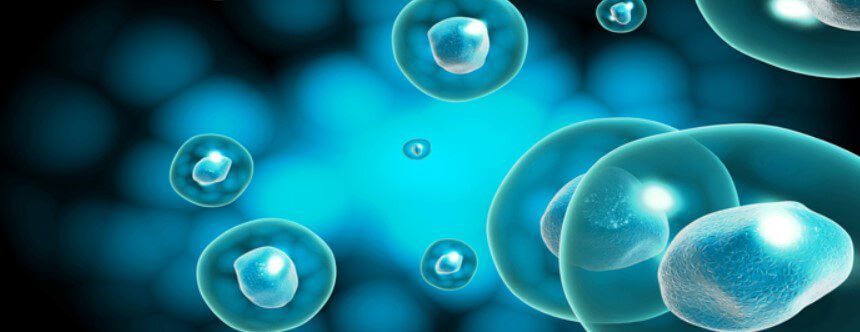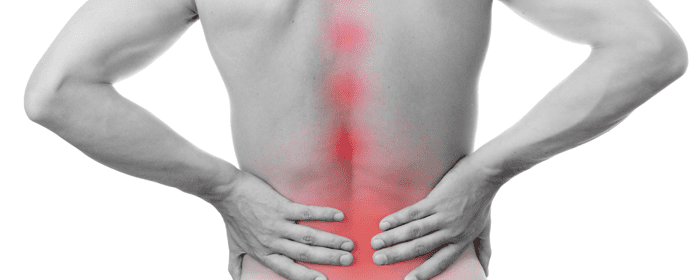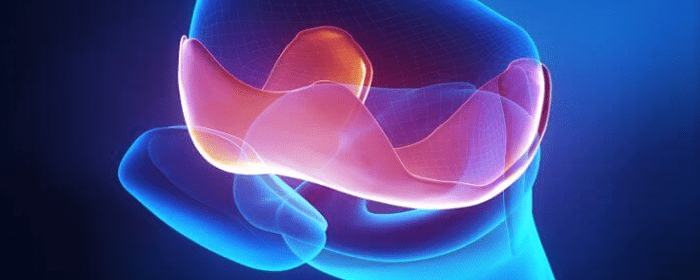
by admin | Nov 30, 2023 | Erectile Dysfunction, Mesenchymal Stem Cells, Regenerative Medicine, Stem Cell Research, Stem Cell Therapy
Erectile dysfunction (ED) is a disorder that affects the quality of life and the sexual relations of more than half of the male population aged over 40 years. Currently, it’s estimated that his disorder will affect more than 300 million men in the next five years.
According to the Mayo Clinic, male sexual arousal is a complex process that involves the brain, hormones, emotions, nerves, muscles, and blood vessels. Erectile dysfunction can result from a problem with any of these. Additionally, stress and mental health concerns can cause or worsen erectile dysfunction.
The treatment of ED has traditionally been based on the temporary enhancement of penile erection but without a permanent treatment option. Current temporary treatment options include phosphodiesterase type-5 inhibitors (PDE5is) such as vardenafil, avanafil, tadalafil, and sildenafil, which are the most widely known and used medications for the treatment of ED.
Unfortunately, the treatment failure levels associated with these drugs are high, with unresponsive rates ranging between 20 and 40%. These failure rates often require the use of additional treatment options for the management of ED, including the use of intracorporeal injections, vacuum erection devices, and penile prosthesis implantation. However, the use and application is also limited due to the high cost, intolerance to side effects, pain, and unsatisfactory results.
Recently, several studies have suggested the use of stem cells for the treatment of ED to be promising in terms of damaged tissue repair as well as clinical efficacy.
In their review of current literature, Protogerou et al. evaluate and summarize the methods of administration, the cell types used in the performed clinical trials, and the safety and efficiency of procedures designed to treat ED.
Specifically, the authors reviewed 10 clinical studies published between 2010 and 2020 and used bone marrow-derived stem cells (BMSCs), adipose tissue-derived stem cells (ADSCs), umbilical cord stem cells, and placenta-derived stem cells. One of the studies reviewed also examined the re-administration of stem cells as a potential therapeutic option. From the authors’ findings, each study demonstrated encouraging results characterized by improved sexual function with no side effects.
Protogerou et al. also point out a number of limitations with these studies, including each being a small study with a short follow-up period, various etiologies of ED, and without control groups.
Despite these limitations, the authors highlight the urgent need for a double-blind randomized controlled study for the clinical effect of stem cell treatment in ED to sufficiently understand the ideal therapeutic strategy for using stem cell therapy to treat ED. Source: “Erectile Dysfunction Treatment Using Stem Cells: A Review – PMC.” 6 Jan. 2021, https://www.ncbi.nlm.nih.gov/pmc/articles/PMC7825548/.

by Stemedix | Nov 27, 2023 | Stem Cell Therapy, Autoimmune, Regenerative Medicine, Stem Cell Research
After suffering an injury or experiencing any kind of damage to your body, it’s common to worry about how long the recovery process will take and wonder how soon you’ll be back to your normal self. The answer greatly depends on your physical health, the type of injury you face, and the treatments you’re receiving.
By understanding the drawbacks some traditional treatment options offer, especially when speaking about orthopedic injuries, and knowing more about options like stem cell therapy, you’ll be better able to make informed decisions about your treatment. Learn more about how regenerative medicine options, such as stem cell therapy, can impact the recovery process.
Why Traditional Treatments Aren’t Always Right
In orthopedics, healing takes significant time. It’s important to note, however, that one of the most common treatment options — surgery — only extends the time necessary to fully heal.
The typical healing period for someone who has undergone orthopedic surgery, even minimally invasive options, is several weeks. And that time refers only to the healing needed so that you can be up and walking around again — it does not mean being back to your full strength or regaining your flexibility.
This is why it’s common to see professional athletes take several months to recover after an injury that required surgery. As you recover, you also have to take pain medications and other drugs.
If you don’t choose the surgery route, another traditional option is steroids. These relieve pain and reduce inflammation, but they cause more damage to the injured area. They can cause a decrease in blood supply to the bones in the joints, leading to them weakening. Also, they can potentially accelerate cartilage damage.
Turning to pain medications alone does help reduce pain, but because they don’t do anything to fix the problem causing the pain in the first place, all painkillers do is prolong the issue. Long-term use of pain medications has its own health risks, which you will want to weigh against the benefits the medications provide.
Taking steroids and turning to painkillers will generally only delay the need for surgery. They don’t stop the progression of the problem that causes pain, allowing it to worsen while masking the symptoms. And while surgery is often successful at treating the injury, its cost and invasiveness mean it is not a viable option for everyone.
Understanding Stem Cell Therapy
Stem cells are your body’s building blocks. They are the cells that divide to form daughter cells that become other stem or specialized cells.
Stem cells can generate healthy cells to replace those damaged or affected by disease. They can be guided to become specialized cells, helping repair and regenerate tissues throughout the body.
There are three types of stem cells — embryonic, perinatal, or adult stem cells. Embryonic stem cells come from donated embryos that are three to five days old and contain an inner cell mass. These are pluripotent cells, meaning they can become any type of cell in the body or more stem cells. Due to the controversy of using these stem cells, they are primarily used in research only.
Perinatal stem cells come from amniotic fluid or umbilical cord blood. These stem cells can transform into specialized cells.
Adult stem cells are present in most tissues in the adult body, including fat tissues, bone marrow, or umbilical cord tissue. Although their abilities are slightly more limited than those found in embryonic stem cells, they are still potent and can create all kinds of human cells. Adult stem cells break down into many different types, including:
- Mesenchymal stem cells
- Hematopoietic stem cells
- Skin stem cells
- Neural stem cells
- Epithelial stem cells
Stem cell therapy refers to the use of stem cells to promote the repair response of injured, diseased, or dysfunctional tissues. Stem cell therapy requires the preparation of the cells, which are usually obtained from your body and then injected into the treatment area.
How Stem Cell Therapy Helps
Stem cell therapy stimulates your body’s natural healing response. When a part of your body has inflammation, which is a natural response to an injury, it receives less blood.
The stem cell therapy reduces inflammation, which helps decrease pain while also improving blood circulation. More blood means the injured area receives the nutrients and oxygen it needs to heal itself.
Stem cell therapy allows for the management and healing of the problem. It doesn’t just mask the symptoms or delay the need for surgery; instead, it helps the formation of healthier tissues in the areas where they are needed.
Another benefit of stem cell therapy is that it doesn’t require any invasive procedures. All that is necessary is to extract stem cells from your body and enhance them before injecting them at the treatment site.
Unlike surgery, you don’t have to worry about a long recovery time or having to rely on help from others to manage everyday life as you heal. If you are someone who can’t go under general anesthesia, this is an option to consider. It is an outpatient procedure, allowing you to go home right after.
With stem cell therapy, you also don’t have to stress about participating in physical therapy for months, as you would have to do after surgery. It is an option that allows you to get back to your life as quickly as possible.
Relying on Regenerative Medicine
As one of the branches of medicine that holds promising potential, people are exploring regenerative medicine options like stem cell therapy. From autoimmune diseases to sports injuries and more, stem cell therapy, platelet-rich plasma, and other regenerative medicine options can help.
Not everyone can have surgery, and not everyone wants to depend on steroids and pain medications to feel relief.
By turning to an option that focuses on getting to the underlying problem causing the pain, you have an opportunity to see faster results without worrying about a long recovery process or dealing with general anesthesia. Give your body the chance to heal itself by considering stem cell therapy.

by admin | Nov 23, 2023 | Autoimmune, Mesenchymal Stem Cells, Regenerative Medicine, Stem Cell Research, Stem Cell Therapy
Recent estimates indicate that one in every 10 people is affected by an autoimmune disease.
Autoimmune diseases occur when the normal function of the immune system mistakenly attacks normal and healthy cells within the body; examples of autoimmune diseases include rheumatoid arthritis, type 1 diabetes, and lupus. Currently, there are over 80 known types of autoimmune disease.
Because of their proliferation and differentiation ability, mesenchymal stem cells (MSCs) have increasingly drawn interest from the research community as a potential option for the treatment of autoimmune diseases.
In this study, Zeng et al. evaluate the efficacy and safety of MSC transplantation in the treatment of autoimmune diseases. Specifically, this review included a total of 18 RCTs involving rheumatoid arthritis (RA), systemic lupus erythematosus (SLE), inflammatory bowel disease (IBS), ankylosing spondylitis (AS), and multiple sclerosis (MS).
Reviewing the therapeutic effects of MSCs on each of the diseases, the authors found that with the exception of MS, transplantation of MSCs may improve clinical symptoms and clinical efficacy of these autoimmune diseases. However, the authors also point out that MSCs appear to produce certain specific effects on different autoimmune diseases.
Although no obvious adverse events resulting from MSC transplantation were reported or observed during these studies, and while MSCs appear to have certain effects on different autoimmune diseases, the authors conclude that this review provides relevant evidence for the design of future clinical trials specifically assessing MSC cell source, dosage, route of drug administration, and intervention in the most ideal disease state when treating this group of diseases.
Source: “Efficacy and Safety of Mesenchymal Stem Cell Transplantation in ….” https://www.hindawi.com/journals/sci/2022/9463314/.

by admin | Nov 16, 2023 | Mesenchymal Stem Cells, Stem Cell Research, Stem Cell Therapy
Ankylosing spondylitis (AS) is a progressive, inflammatory rheumatoid disease that, over time, can result in chronic spinal arthritis and can cause the vertebrae to fuse together. Affecting an estimated 300,000 people in the U.S., AS causes the spine to become less flexible and can result in a hunched posture.
There is no current treatment for AS and current drug therapy options are focused on reducing inflammation, stiffness, and back pain. While current treatments assist in reducing inflammation, many patients with AS continue to experience unresponsive or painful side effects from these drugs.
In the search for a cure for AS, stem cells – and specifically, mesenchymal stem cells (MSCs) have emerged as a potentially promising treatment option. Specifically, researchers believe the immunomodulatory and regenerative properties demonstrated by MSCs could reduce inflammatory responses and help tissue repair through cell-to-cell contact and secretion of soluble factors.
In this review, Abdolmohammadi et al. describe immunopathogenesis and current treatment restrictions of AS and discuss the recent findings of clinical trials involving MSC therapy in AS.
The safety and therapeutic potency of MSC therapy have been shown in many types of research. While there are currently a number of in-process clinical trials exploring MSC transplantation in related disorders, the transplantation of MSCs is a therapeutic option for AS patients who cannot tolerate the anti-inflammatory drugs.
Previous studies have demonstrated MSC infusion in AS patients to be a safe and beneficial choice with no severe side effects and is effective in decreasing related clinical symptoms and severity of the disease. There are also a number of clinical trials for curing AS patients currently in progress. These trials include phase 1 exploring the application of human umbilical cord-derived MSCs (hUC-MSCs) and IV infusion of MSCs plus NSAIDs in AS patients, phase 2 of a clinical trial evaluating human bone marrow-derived MSCs application in AS patients, and clinical trial phase I/II for the safety of MSC transplantation in patients with AS.
Although there have been notable achievements in the treatment of AS using NSAIDs, glucocorticoids, and other drugs, a therapeutic option without side effects has yet to be discovered. MSCs offer a favorable treatment option for the treatment of immune-mediated disorders, including AS.
While findings of previous studies demonstrate that MSC injection might be beneficial in alleviating AS signs and symptoms, the authors point out that further study is required to determine several important features of MSC therapy, including cell origin, dosage, administration route, and the most ideal stage of disease for intervention, before it can be accepted as a clinical option for treating AS.
Source: “Ankylosing spondylitis and mesenchymal stromal/stem cell therapy.” https://www.sciencedirect.com/science/article/pii/S0753332218356762.

by Stemedix | Nov 13, 2023 | Stem Cell Research, Alzheimer’s Disease, COPD, Parkinson's Disease, Regenerative Medicine, Stem Cell Therapy
Regenerative medicine using stem cell therapy has grown in popularity in the past years because of the promising results it has shown for the management of conditions, injuries, and other issues.
By understanding the power of stem cells, the options available, and the reasons why some people are hesitant while others urge research forward, you can decide for yourself whether they are the appropriate treatment option for you.
What Are Stem Cells, and How Do They Help?
Stem cells are undifferentiated cells with the potential to become and create specialized cells. They function as a repair system for the body, contributing to the process of tissue regeneration while also supporting normal growth and development.
Stem cells have two crucial and unique abilities: pluripotency and self-renewal. Pluripotency is the ability to become any kind of cell needed, and self-renewal refers to the way they can replicate themselves indefinitely, providing a never-ending supply of undifferentiated cells.
Different Types of Stem Cells
There are three broad categories of stem cells: embryonic stem cells, adult stem cells, and induced pluripotent stem cells. Each option has diverse applications and unique characteristics.
Embryonic cells come from blastocyst-stage embryos, which are embryos that are from three to five days old. They usually derive from in vitro fertilization clinics. At this stage, the embryo contains an inner cell mass capable of creating all of the tissues that make up the human body. Embryonic cells are fertilized in a lab and donated with full consent. But due to ethical controversy, it is widely used in research only.
Adult stem cells are found in various tissues and organs throughout the adult human body. These stem cells are multipotent, so they can transform into a limited number of stem cells. Adult stem cells help maintain tissue homeostasis and repair and replace damaged cells.
Adult stem cells include:
- Mesenchymal stem cells
- Blood stem cells
- Skin stem cells
- Neural stem cells
- Epithelial stem cells
Induced pluripotent stem cells are made by reprogramming certain adult stem cells into a pluripotent state with the use of genetic factors. These cells are similar to embryonic stem cells in the way they function.
Stem Cell Research: Why There’s Controversy
Using stem cells and performing stem cell research still poses challenges in ethics for some people, especially when turning to embryonic stem cells.
Concerns over when personhood begins make the use of embryonic stem cells more complex because there’s a worry about the moral status of embryos and whether they can be used or discarded.
It’s crucial to understand that the embryos that are used have never been in a woman’s body. They are embryos that fertility clinics would otherwise discard. Although the discarding of the embryos is not usually a controversy, the use of those same embryos for research creates controversy for some.
In this regard, induced pluripotent stem cells are more readily accepted because they don’t rely on embryos. Other issues can arise, however, when it comes to the actual process of researching stem cells. This includes oversight concerns as well as consent issues.
Arguments for Stem Cell Research
Because of the benefits that stem cell therapy offers, many scientists encourage research to improve treatments and learn more about how human bodies function.
Scientific Advancements
Stem cell research contributes to the understanding of cellular processes. This allows for the development of better treatment options, as well as a better comprehension of how some conditions form. Stem cells hold promise for the treatment of degenerative conditions like Parkinson’s disease, COPD, and Alzheimer’s.
Additionally, stem cell research offers the chance for scientists to understand how stem cells replace or repair damaged cells. This information would make it easier to provide targeted treatments that are more efficient and longer lasting.
Economic Boost
Using stem cells to create new therapies and medical technologies opens the door to the creation of new jobs and specializations. These advanced treatments can also help decrease medical costs, helping the economy in the long run.
Ethical Use of Discarded Embryos
Embryos that have been made via in vitro fertilization processes and have gone unused can serve a purpose instead of being discarded. Many argue that this is a better option than treating the embryos like medical waste.
Arguments Against Stem Cell Research
Those against stem cell research generally cite safety and ethical concerns centering on consent and exploitation problems.
Safety and Efficacy
Because stem cell therapies are still relatively new, there are worries about how effective they can be. The issue with this argument against stem cell research is that it fights against the very thing that would provide a definite answer as to whether stem cells are effective and safe: ongoing research.
Ethical Concerns
The ethical concerns mainly focus on the use of embryonic stem cells, including the worry about obtaining consent. In many instances, detractors suggest turning to induced pluripotent stem cells for research and avoiding embryonic cell use because of the ethical barriers that would slow the research down.
In other instances, the worry of consent focuses on the risk of the potential exploitation of vulnerable populations. Those against the research note concern about the possibility of future coercion and other similar activities.
However, as with any other form of research, the scientific community imposes strict guidelines designed to protect against these concerns.
Focusing on the Potential of Regenerative Medicine
Living with chronic conditions that affect quality of life usually means relying on medications, invasive procedures, and therapies that might manage some symptoms but don’t get to the root of the problem.
On the other hand, stem cell research offers the potential to not only understand the causes of some of the most debilitating conditions and injuries, but also to provide therapy solutions to help manage symptoms.
The path to learning more about conditions like COPD or Parkinson’s is not easy, but embracing new and promising treatment options can open a way forward. By tackling some of the ethical concerns people have about stem cells head-on, lives may be able to improve for many people around the world.

by admin | Nov 9, 2023 | Athletic Injury, Mesenchymal Stem Cells, Regenerative Medicine, Stem Cell Research, Stem Cell Therapy
Articular cartilage primarily consists of chondrocytes and extracellular matrix and has an essential role in the process of joint movement, including lubrication, shock absorption, and conduction. However, over time, damage to the articular cartilage caused by acute or repetitive trauma or disease of the joints – including osteoarthritis – often results in pain, lack of mobility, and reduced quality of life for an estimated 500 million people worldwide.
Current treatments to address articular cartilage defects include physiotherapy, medication, intra-articular injection, and intra-articular irrigation; none of these treatments are able to regenerate the new cartilage needed to correct the issue.
In recent years, mesenchymal stem cells (MSCs) have been found to be potential solutions for a number of diseases, including OA, specifically because of their ability to differentiate and produce a variety of cells. MSCs have also been found to be safe for use in humans and have demonstrated the ability to improve clinical symptoms such as pain, disability, and physical function.
Additionally, hyaluronic acid (HA) has demonstrated itself to be an important component of the synovial fluid by protecting joint cartilage by providing lubrication and acting as a shock absorber. However, in the presence of OA, HA concentration decreases and results in increased aggravation and joint damage to cartilage. Like MSCs, clinical studies have also demonstrated HA’s ability to relieve pain in patients with OA.
In this study, Li et al, investigate the therapeutic effects of bone marrow mesenchymal stem cells (BMSCs) combined with HA on articular cartilage repairs.
Specifically, 24 healthy canines were operated on to induce cartilage defect model before being randomly divided into 3 groups; each of these groups received a different treatment: bone marrow mesenchymal stem cells (MBSCs) plus HA, HA alone, or saline. After 28 weeks, Li et al. found that the canines treated with BMSCs plus HA (BMSC-HA) showed significant improvement in cartilage defects compared to those receiving just HA or just saline.
The authors also found that while BMSCs-HA demonstrated the most significant improvement in cartilage defect, treatment with HA alone also demonstrated improvements when compared to those receiving saline alone.
Li et al. also identified a number of important limitations of this study, including the limited level of cells and proteins; the repair of cartilage defects in this study was a dynamic process that limited the study to the terminal point of repair; and that this was a preliminary and non-blinded study, which could have affected the evaluation of ICRS macroscopic and histological score. Considering this, the authors call for further blinded and basic experiments as a way to further improve understanding.
As a result of this study, Li et al. concluded that both BMSCs-HA and HA alone could significantly promote new cartilage formation, with BMSCs-HA demonstrating a better way to repair cartilage defects in a canine model.
Source: “Mesenchymal Stem Cells in Combination with Hyaluronic Acid for ….” 2 Jul. 2018, https://www.ncbi.nlm.nih.gov/pmc/articles/PMC6028658/.







 St. Petersburg, Florida
St. Petersburg, Florida
